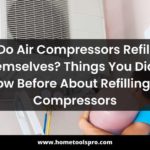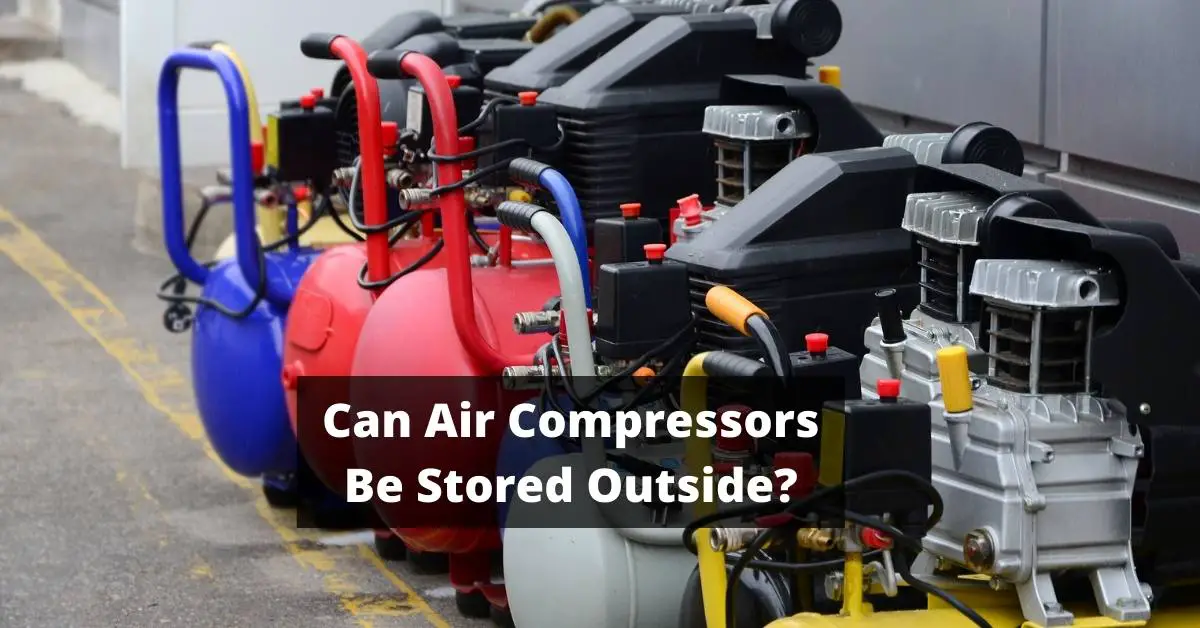As someone who enjoys using a plasma cutter for my DIY projects, I know how important it is to have the right air compressor to power it. It’s a crucial component that can make or break the success of your cutting operation. With so many options available, it can be overwhelming trying to figure out what size air compressor you need for your plasma cutter.
In this article, we’ll go over everything you need to know about choosing the right air compressor size for your plasma cutter. We’ll cover the basics of plasma cutting and why an air compressor is necessary, as well as factors such as material thickness and required CFM that will influence your decision.
By the end of this article, you’ll have all the information you need to confidently choose an air compressor that will provide enough power for your plasma cutter while also being portable and easy to maintain.
So let’s dive in!
Understand the Basics of Plasma Cutting
You’re probably wondering how to effectively slice through metal with precision and speed, and that’s why understanding the basics of plasma cutting is crucial.
Plasma cutting involves creating a high-temperature plasma arc that melts and vaporizes metal, leaving behind a clean cut.
The process requires three main components: a power supply for generating the plasma arc, a gas supply for focusing the plasma, and an air compressor for providing compressed air.
The air compressor is an integral part of the plasma cutting process as it provides compressed air to blow away molten metal from the cut. This helps prevent slag build-up on the surface of the material being cut.
When choosing an air compressor for your plasma cutter, you need to consider its CFM (cubic feet per minute) rating. A higher CFM rating means more compressed air is available to blow away molten metal quickly.
Choosing the right size of your air compressor is critical in getting clean cuts when using a plasma cutter. In determining this size, you should consider factors such as your preferred cutting speed, thickness of materials being cut, and frequency of use.
With this information in mind, you can select an appropriately sized compressor that meets your needs without overspending on unnecessary features or capacity.
Determine the Size of Your Plasma Cutter
To accurately determine the appropriate size for your plasma cutting equipment, it’s crucial to consider factors such as power output and duty cycle.
The amount of air pressure required by a plasma cutter depends on its amperage rating. For instance, a 40-amp plasma cutter needs about 5.0 CFM at 90 PSI or more, while a 60-amp plasma cutter requires approximately 6.0 CFM at the same pressure.
Another essential factor to consider when determining the size of your air compressor is duty cycle. It refers to the percentage of time your machine can operate without overheating or shutting down due to excessive use.
Some high-end models can provide up to 100% duty cycle, meaning they can run continuously without any risk of damage.
In conclusion, understanding the power output and duty cycle is critical in choosing an appropriately sized air compressor for your plasma cutter. However, before making a final decision, you should also consider the thickness of materials you’ll be cutting with your equipment.
This will help ensure that you have enough air pressure to handle even the most challenging tasks with ease and efficiency.
Consider the Thickness of the Materials You’ll be Cutting
If you want to cut through tough materials like a pro, it’s crucial to factor in the thickness of what you’ll be slicing before choosing the right equipment. The plasma cutter and air compressor should work in tandem to achieve optimal results.
The material’s thickness plays a key role in determining the minimum size of the air compressor needed. The general rule of thumb is that thicker materials require more power, which means higher cfm (cubic feet per minute) ratings for your air compressor.
A plasma cutter with a 60-amp capacity needs around 8 cfm of compressed air flow at 80 psi (pounds per square inch). This requirement increases as the material thickness goes up. For instance, if you’re cutting through metal sheets or plates that range from half an inch to one inch thick, your machine will need at least 20 cfm.
To ensure a smooth cutting process, consider investing in an air compressor with a high enough cfm rating for your plasma cutter. Calculate the required cfm based on the thickest material you plan to cut and add some extra capacity for safety measures.
With this information, you’ll be able to make an informed decision about how big of an air compressor is suitable for your plasma cutter setup.
Calculate the Required CFM
It’s crucial to calculate the required CFM for your setup in order to achieve optimal results and avoid any hiccups during the cutting process. CFM stands for cubic feet per minute, which is a measurement of how much air an air compressor can deliver at a certain pressure.
To determine the required CFM for your plasma cutter, you need to consider its amperage rating and the thickness of the materials you’ll be cutting. Plasma cutters require different levels of airflow depending on their amperage ratings. For instance, a 40-amp plasma cutter needs about 6-8 CFM while a 100-amp one requires up to 20 CFM.
Moreover, thicker materials require more airflow than thinner ones because they need more heat energy to melt through them. Therefore, if you’re planning to cut thick materials regularly with your plasma cutter, you’ll need an air compressor with higher CFM ratings.
To ensure that your air compressor can provide enough airflow for your plasma cutter, it’s advisable to choose one with at least 1.5 times the required CFM rating of your machine. This gives you some leeway in case there are slight variations or fluctuations in the pressure or flow rate of compressed air from your unit. Additionally, it helps prevent overheating or overloading of both devices during extended use.
Choosing an air compressor with enough power will not only improve performance but also prolong their lifespan and save you money in the long run by reducing maintenance costs and repair bills.
Choose an Air Compressor with Enough Power
You need a powerful machine that can keep up with your cutting demands, ensuring smooth and effortless operation without any interruptions or slowdowns. When choosing an air compressor for your plasma cutter, you should consider its horsepower rating. The higher the horsepower rating, the more power it can generate to provide adequate air supply to your plasma cutter.
However, it’s also important to note that a higher horsepower rating will consume more electricity than a lower one. You should, therefore, strike a balance between power and energy consumption when selecting an air compressor for your plasma cutter. Additionally, you should look at the duty cycle of the compressor, which refers to how long it can operate continuously before requiring rest periods.
When choosing an air compressor for your plasma cutter, you want to ensure that it has enough power to meet all your cutting needs without compromising on efficiency. By considering factors such as horsepower rating and duty cycle, you’ll be able to select an air compressor that provides sufficient airflow and pressure for use with your plasma cutter.
In the next section, we’ll look at other factors, such as noise level and portability, that are equally important in making this decision.
Consider the Noise Level and Portability
When selecting an air compressor for plasma cutting, it’s important to consider the noise level and portability. The noise level can greatly impact your user experience, especially in shared workspaces. Look for models with lower decibel levels or noise reduction features.
Portability is another factor to keep in mind. If you plan on moving your equipment frequently, look for lightweight models with wheels or handles. Consider the tank size as well – larger tanks may offer longer run times but can be heavier and more difficult to move.
By considering both noise level and portability, you can find a model that meets your plasma cutting needs and fits seamlessly into your work environment. In the next section, we’ll discuss maintenance and safety tips when working with your new equipment.
Maintenance and Safety Tips
In this section, we’ll go over some simple steps to ensure that your equipment is both safe and reliable. What can you do to keep yourself working efficiently and avoid accidents?
When it comes to maintaining your air compressor for plasma cutting, there are a few key things to keep in mind. First, make sure you’re using the right oil. Not all oils are created equal, and using the wrong one can cause serious damage over time. Second, be sure to replace filters regularly. These help keep moisture and other contaminants out of your compressed air system.
Speaking of accidents, have you ever considered the consequences of not following proper safety protocols while using your plasma cutter? This is one area where it’s absolutely critical to pay attention. Even small mistakes can lead to serious injuries or damage. Always wear appropriate protective gear when operating a plasma cutter, including eye protection and gloves. Make sure your workspace is well-ventilated, as cutting produces fumes that can be harmful if breathed in.
Finally, don’t forget about regular maintenance for your plasma cutter itself. This includes keeping the electrode clean (this should be done after every use), checking coolant levels (if applicable), and inspecting torch consumables for wear or damage.
By taking care of both your air compressor and plasma cutter on a regular basis, you’ll ensure that they stay safe and reliable so you can keep working efficiently without any unexpected interruptions.
Conclusion
After researching and analyzing the necessary factors for choosing an air compressor for my plasma cutter, I finally made a decision.
Choosing the right air compressor is like choosing a trusty sidekick to help you conquer any cutting task. It’s not just about finding one that can provide enough power; it’s also important to consider its noise level, portability, and maintenance requirements.
Just like how Batman needs his Robin, my plasma cutter needs its air compressor. With the perfect companion by my side, I can now tackle any metal fabrication project with ease and confidence.
The sound of the air compressor roaring as it powers up my plasma cutter is music to my ears. It symbolizes the beginning of a new creation – something that was once just an idea in my head is now taking shape before me thanks to the reliable power source that stands beside me.


